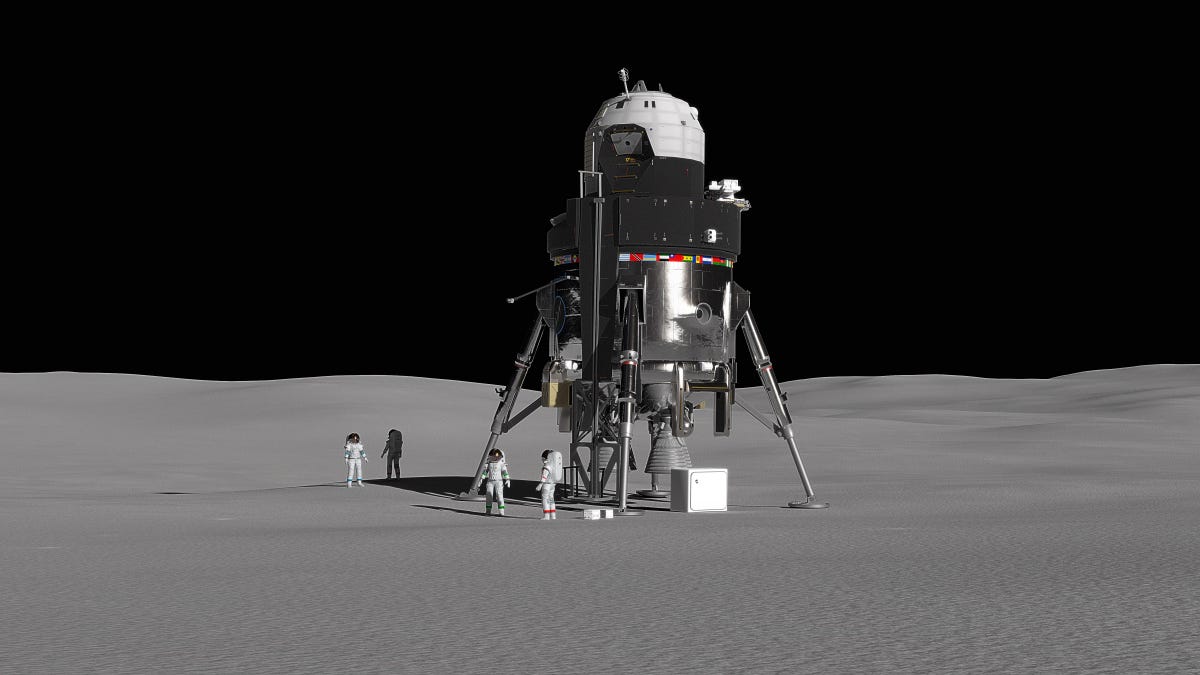This lunar lander concept could take us back to the moon
Lockheed Martin unveils a new design for a reusable vehicle to travel from the moon's surface to a proposed lunar space station as much as you like.

As NASA turns 60, it's looking to return to the moon, and the company behind the space agency's next-generation spaceship has an idea for a 21st-century lunar lander.
On Wednesday at the International Astronautical Congress in Germany, Lockheed Martin is presenting its concept for a new vehicle that could take humans back and forth from the lunar surface to a space station, or "gateway," in orbit around the moon.
NASA has been looking into developing such a lunar gateway for a few years now and the Trump administration has thrown its support behind the idea. Six companies, including Lockheed Martin, were given contracts to build ground prototypes of such a lunar orbiting station. (The others are Boeing, Bigelow Aerospace, Sierra Nevada Space Systems, Northrop Grumman and Nanoracks.)
Lockheed Martin's concept lunar lander is 46 feet (14 meters) tall, with enough space to carry a crew of four and about a metric ton of equipment, including sufficient supplies and life support for journeys lasting up to two weeks away from the gateway.
The lander could be refueled and would be reusable so it could make a number of expeditions without having to go back to Earth. In fact, the lander isn't designed to ever return to Earth.
Lockheed Martin's lunar lander design can support a crew of four for up to a two-week mission to the moon.
Lockheed Martin Space Exploration Architect Tim Cichan describes the lunar lander design as a "precursor version" of the Mars lander that's part of the company's Mars Base Camp concept, which it introduced at IAC in 2017.
"We decided to start with Mars because that is the end goal of deep space exploration at the moment and work backwards," Cichan said over the phone last week prior to leaving for Germany.
Cichan hopes a lot of the systems and technologies that go into a lunar lander could also carry over to a Mars vehicle. He says both vehicles could also use much of the same equipment that's being used for NASA's Orion spacecraft, which is being built by Lockheed Martin and scheduled for its first unmanned mission around the moon in 2020.
The lunar lander would have its own single-stage rocket engine fueled by liquid oxygen and hydrogen (H2) propellant that could be refined from water.
An artist's rendering of the lander on the lunar surface.
The lander could be refueled by sending propellant all the way from Earth, but ideally water could be collected as ice from the surface of the moon and then brought to an orbiting refinery attached to the gateway, where it's converted to rocket fuel using solar-powered electrolysis.
But Cichan says it could take some time to figure out how to get access to lunar ice and start essentially mining the stuff for fuel.
"We've got multiple steps before we get to that point."
One of those steps might be to wait for Jeff Bezos and Blue Origin to get their planned "Blue Moon" lunar cargo delivery service up and running. Does a Prime account still get you two-day delivery on the moon?
NASA turns 60: The space agency has taken humanity farther than anyone else, and it has plans to go further.
Crowd Control: A crowdsourced science fiction novel written by CNET readers.

